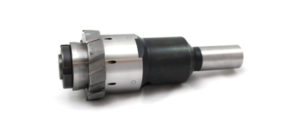Meeting part specs is an everyday challenge for Manufacturing Engineers. Rejected and scrapped parts can have devastating effects on a bottom line. When it comes to hole making, often times the toughest requirement to meet is the surface finish. Specifically for holes, great option for achieving a quality surface finish is high performance reaming.
What is high performance reaming?
The simple definition of reaming is “to widen a bore or hole with a special tool”. The definition of a reaming tool is “a type of rotary cutting tool used in metalworking”. So how do we differentiate between a normal reamer & a high performance reamer? A high-performance reamer has multiple blades that are brazed & ground with a specific geometry to maximize bore concentricity and surface quality. These tools run at much faster speeds than traditional reamers. For instance, a high-performance reamer would be used in applications that require process stability, holding tight tolerances and/or are in need of high-quality surface finishes.
High performance reaming & surface finish
Often times the use of high performance reamers are thought of only to hold a tight tolerance or to reduce cycle time. These are all fantastic benefits of high performance reaming but there are even more benefits that can be overlooked. A major advantage of high performance reaming is its ability to generate a low Ra surface finish. This is made possible by multiple cutting edges & the increased speed at which these reamers run. Each blade is ground with a geometry that is specific to the material it is machining to maximize performance. These different geometries have been developed & tested through years of application data. For example, if you are machining a material that does not chip well, these stringy chips can compromise surface quality & tool life. A high performance reamer would be made with a chip breaking geometry to mitigate this issue resulting in a low surface finish value, less scrapped parts and happier machinists!
Cost savings, cycle time reductions, process security & a quality surface finish are all things to expect when you implement a high-performance reamer into your process. Manufacturing Engineers that take advantage of this tooling will see a reduction in costs and lasting results.
For more information on high performance reaming for low surface finishes, contact one of our experienced professionals today.




